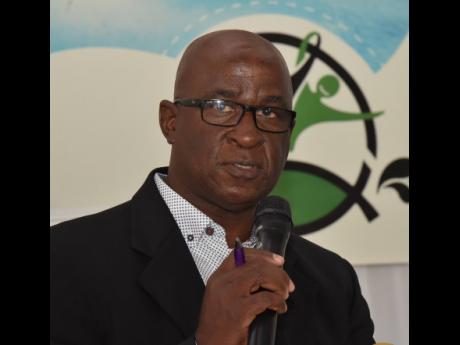Aquaculture sector set for a major boost
World Bank to fund bio-secure, climate smart tilapia hatchery
Jamaica’s aquaculture industry is poised for a major reset with the construction of a tilapia hatchery on government land at Twickenham Park, St Catherine, which will be funded by the World Bank through the Climate Initiative Fund. The bio-secure, climate-resilient hatchery will be built and operated under internationally sustainable environmentally friendly conditions and will be capable of producing five million advanced fry per year, using a recirculating aquaculture system (RAS).
The building plans having already been submitted to the St Catherine Municipal Corporation and the architects have expressed confidence that they will get the green light, based on the advanced technology that has been incorporated into the overall design.
Final design and bill of quantities for the hatchery were completed by Bernard Sustainable Engineering Company and the building is expected to cost approximately $375 million. Meanwhile, the design and bill of quantities for the recirculating aquaculture system were completed by Holland Aquaculture and the Dutch company will also be responsible for the installation and training of stakeholders, as well as a brood stock improvement programme. The estimated cost of this recirculating aquaculture system for this hatchery is $70 million. The RAS will use about 10 per cent less water than a conventional hatchery and occupies far less land area.
The Social Investment Fund (JSIF) is the implementing agency and the National Fisheries Authority is having discussions with JSIF, with the aim of having it cofund the project under component two of the Promoting Community–Based Climate Resilience in the Fisheries Sector.
It is anticipated that upon completion the hatchery will address the issue of the shortage of good quality seed stock, a bottle neck which has been hampering growth in the sector, and is especially vital as Jamaica seeks to address the issue of food and nutrition security.
FIRST PHASE
Under the first phase of the project, the five million fry produced will represent a 300-per-cent increase.
The following spin-offs are expected once the RAS is operational:
• Reduction of the vulnerability of fish farmers to climate shock
• Diversification and strengthening of the livelihood of fish farmers and their families
• Introduction of the farmers to new and advanced technology via the RAS
• Production and productivity will be significantly enhanced thereby spawning further investments and resulting in increased employment in the aquaculture sector.
Selena Ledgister, World Bank consultant to the ministry’s Climate Resilience in Fisheries Sector, said at a recent stakeholders meeting that there is an urgent need to incorporate climate resilience in all projects going forward.
The sustainability of this project depends on it, she said, noting that following the introduction of commercial aquaculture to Jamaica in 1976, tilapia was the main food fish produced for local consumption, as well as for export. Production peaked at 8,000 metric tonnes in 2006, but by 2015 had fallen precipitously to 646 metric tonnes.
FOOD SECURITY CHALLENGES
In his remarks, chief technical director in the agriculture ministry, Orville Palmer, lamented that despite the gains made back then, Jamaica is faced with food security challenges, including the ability to produce food at an affordable price for consumers.
“There was a time when New Zealand was looking at what Jamaica did with the tilapia industry in terms of efficiencies and try to replicate and today they are way ahead of us, he pointed out.
Engineer Keroma Bernard of Bernard Sustainable Engineering Company said given features such as the integrated power system for the hatchery which will be operated 24-hours with no downtime, even in the event of a power cut. For this reason, in addition to being connected to the national grid, it will have a back-up generator system, as well as a solar system with sufficient battery back-up to accommodate the operations, just in case of any emergency.
“We ensured that the upgraded hatchery meets international standards for bio-security, which is of the utmost importance in the prevention of diseases in the aquaculture sector. There is also rainwater harvesting, solar integration, buffer zone, porous parking and as it relates to the waste-water treatment system, it’s a tertiary component system that includes an anaerobic baffled reactor, reed bed and a chlorination chamber that based on the design process will exceed the National Environment and Planning Agency required standard for all parameters for which they assess.
“So in the overall theme and push for smarter and more integrated building, we have to look at what is happening inside for the occupants, as well as what is happening outside for the general public. This because we want to make sure that in all of this development that we maintain the level of climate resilience that is needed for it to last a very long time.”



